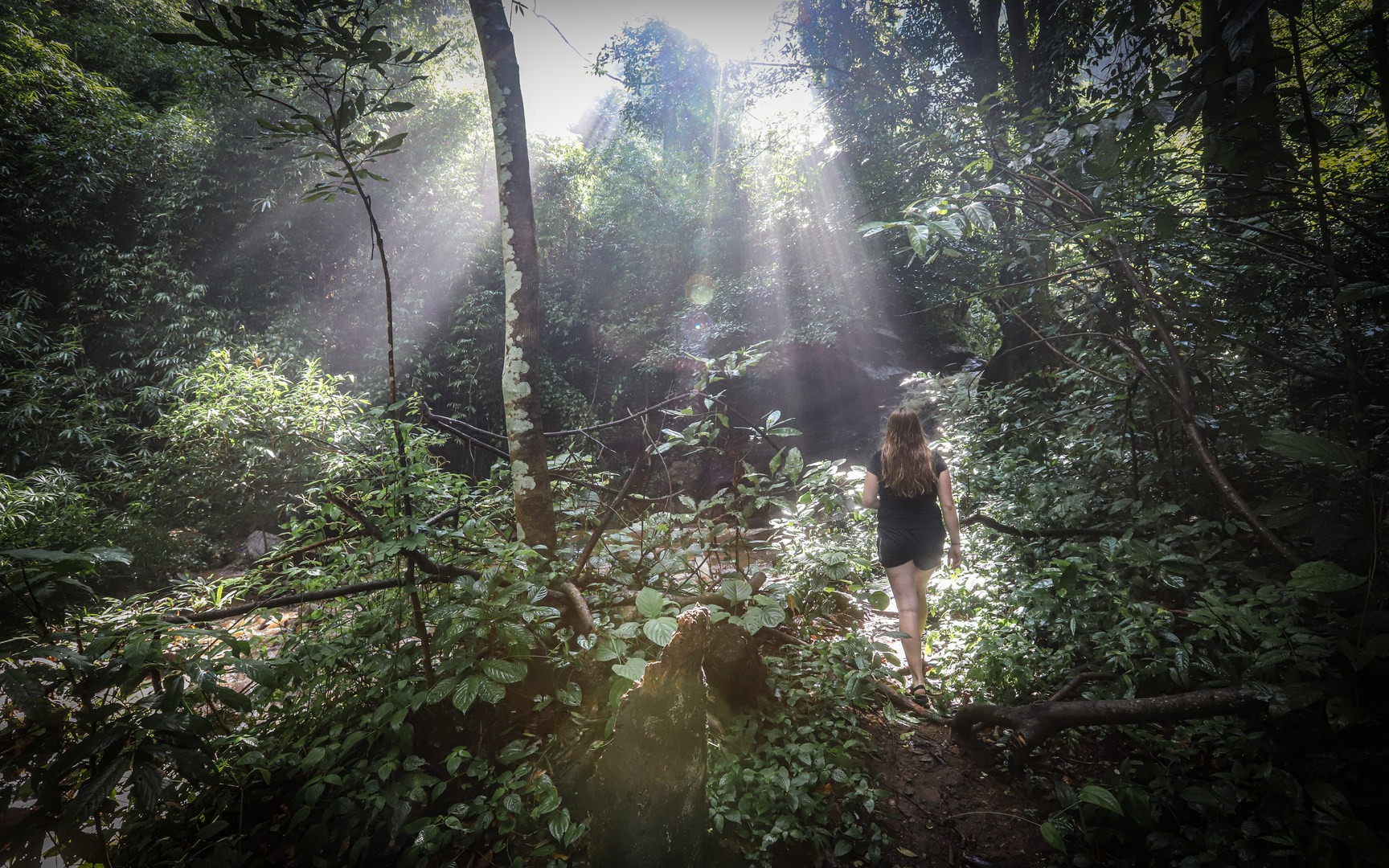You are here
Doi Suthep-Pui National Park is named after Doi Suthep, the mountain in the Thanon Thong Chai Range rising high above Chiang Mai's western edge that the park sits on.
The National Park has a variety of areas of interest for visitors, including waterfalls, hiking trails, campgrounds, temples, vista points, as well as containing about 360 species of birds and mammals, and nearly 2,000 species of ferns and flowering plants. Cyclists like to use the 10 kilometer steep winding road into Chiang Mai for riding as well.
Covering an area of 26 square kilometers, Doi Suthep-Pui National Park is a higher-elevation jungle environment, and remains cooler and more wet than other parts of Thailand. Inside the park, there are oak and magnolia trees, while Asian blackbear, Assam macaque, Asian golden cat, wild boar, and Malayan porcupine are known to live inside the park. There is at least one species, Doi Suthep bent-toed gecko, known to be endemic to the National Park, living only within the park's land.
Hikes:
There are many trails that lie within and cross the park area, with some of these trails being the main course of commuting for past village and monk populations. One of these trails is the Buddha's Footprint Trail which loops from the Doi Pui Hmong Tribal Village and requires a guide or ranger.
Another popular trail is the Monk's Trail, which begins at the western edge of Chiang Mai and climbs all the way to Wat Phra That Doi Suthep at the top of the park.
The Montha Than Waterfall Trail is a 2.4-kilometer loop trail lying within the Montha Than area.
Camping:
The park contains two campground areas, Montha Than Campsite and Yod Doi Pui Campsite. Both campsites offer tents, sleeping bags and gear for rent, while Yod Doi Pui Campsite also rents bicycles. In addition, these areas offer rental bungalow cabins that can be reserved up to 60 days in advance.
Waterfalls:
There are numerous waterfalls located throughout the park, with some set beside the road and easily accessible by car, while others require lengthy hikes to reach.
Amongst these waterfalls are Montha Than Waterfall in the Montha Than area, Huey Kaew Waterfall located at the park's edge in Chiang Mai, Mork Fa Waterfall at the parks northern edge, Mae Sa Waterfall which requires a 2.5 kilometers hike to reach, Dtaat Mook which is located at a ranger station, Huai Rap Sadet Waterfall located just below Wat Phra That Doi Suthep Temple, and a series of cascading falls near Wat Pha Lat Hidden Temple.
Temples:
Wat Phra That Doi Suthep Temple sits atop the park and is one of the park's most popular attractions. The temple contains wide views, and the chance to see an intricately-designed 600 year old Buddhist Temple.
Visiting the park:
Doi Suthep-Pui National Park's proximity to Chiang Mai makes the area easy to visit. Tour groups from Chiang Mai visit the park and its attractions daily, while bicyclists and hikers make their own way up the park's roads and trails. Personal vehicles and scooters offer the best opportunity for exploring many of the park's smaller features.
Cost:
While the road through the park is open to anyone at all hours, several of the park's areas have limited schedules and charge an admission rate for entrance - this includes many of the park's waterfalls. Admission to Doi Suthep-Pui National Park in these areas is 100 Baht per adult, 50 Baht per child, and varying rates for vehicles on top of the per person charge.
Hours:
Those areas of the park that charge admission are typically open from 8am-4pm daily. Other private areas such as Wat Phra That Doi Suthep keep their own hours.
Logistics + Planning
Current Weather: Powered by Dark Sky
























Comments
Sign In and share them.